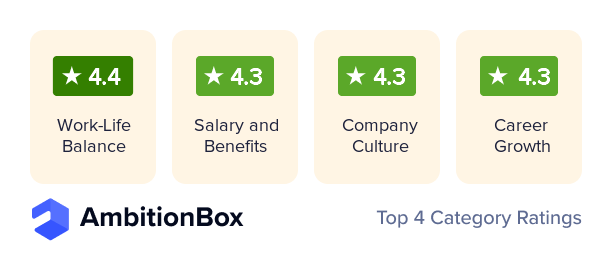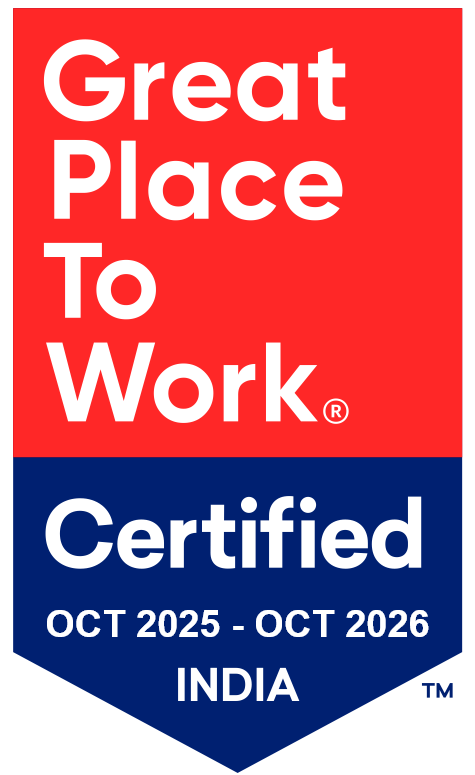In one of our earlier blogs, we had started with the basics as to what constitutes data-driven recruitment, the potential pitfalls of a bad hire, the economic aspect of it and where does data-driven recruitment come in – not only as an enabler but also as an important value-add to the recruitment value chain. While a metric-based or a performance-centric approach can mark the initiation of a data-driven strategy in recruitment, research points out that the growing importance of the recruitment function at the strategic level calls for a well-defined strategy that finds resonance with the overall business objectives.
In this blog post, let us delve deeper in to the world of analytics within the realm of recruitment.
A new ‘Hiring Boss’ on the anvil - The Algorithm
As an article in the Wall Street Journal (WSJ) famously declared, “for more and more companies the hiring boss is an algorithm”, which underscores the adoption of Big Data and AI in recruitment. As companies up their ante in their fight for elusive talent, the financial implications of a bad hire is becoming clearer to them. And it is not just talent acquisition, but AI and the underlying enabler – Big Data is finding its use in other HR processes as well – retention, training/learning & development (L&D), performance management and the like.
Data-driven recruting is one, incorporating analytics for informed decision-making is another. While the starting point for both is data, but mere tracking of HR/recruitment metrics and SLA-based reporting isn’t good enough. It has been in use for over 2 decades now. One of the reasons being highlighted is that the use of traditional data-centric decision making in recruitment and in the broader aspects of HR presents a partial picture only, reporting what has happened in the previous instances. It is merely ‘Reportive’ in nature and not ‘Predictive’ or forward-looking.
Enter Analytics.
With the advent of digital technologies and the changing nature of the job market, sophisticated assessment tools, new interview techniques, simulations etc are now being assimilated in algorithms that eventually ‘predict’ the outcomes of talent acquisition processes. Tech practitioners in HR are making the case for both Predictive as well as Prescriptive analytics.
‘QIA’ Candidates - why is everyone after them?
In one of the editions of Forbes Insights published in association with Teradata, an interesting term has been used to argue that the success of organizations today depends on their ability to hire the so-called ‘QIA candidates’ – qualified, interested and available, particularly for niche technology roles. The April 2019 unemployment rate declared by the US Bureau of Labor Statistics was just 3.6%, the lowest since 1969. To beat the talent squeeze, more and more recruiters are turning to data-driven recruitment which has emerged as one of the levers for efficient and effective recruitment. As it is, recruiting passive talent has become one of the defining features of success. While the debate on the similarities and/or the differences between sourcing and recruiting still continues, looking beyond the vast passive talent pool to return with the “QIA candidates’ holds the key.
Research indicates that at a higher level, all recruiting organizations/functions are primarily racing against potential bias, inefficiencies and time.
Why attitude matters
Introducing the team to recruitment analytics is a decision not limited to strategy, people or processes. A research published by Jibe (candidate experience platform) and Beamery (machine intelligence powered candidate engagement software) points out that the use of analytics in talent acquisition is following similar paths as has been in the case of customer experience, sales and marketing over the past few years. Measured in terms of ‘priority’. the research indicates that more than 70% of the respondents feel that the use of analytics in recruitment is ‘high priority’ for them.The attitudes are also swayed to a large extent, by the potential benefits of recruitment analytics. Some of the widely known benefits are:
- More efficient talent acquisition processes
- Higher RoI for new hires, higher chances of a better hire
- Better utilization of time and faster time-to-market
- Plan future hires by tracking passive candidates
- Enables better decision making leading to better outcomes
Using Analytics to predict the future… and to reduce guesswork
Tracking productivity metrics (also known as KPIs) alone, based on large volumes of data is passe. While it helps derive insights about the efficacy of the talent acquisition and other HR processes, it is generally viewed as being reactive in nature. It involves analysis of large volumes of historical data to ascertain the bottlenecks and lag areas and then acting upon them to improve the KPIs. With the function of talent acquisition becoming more target-oriented and strategic in nature, the advent of newer technologies such as Machine Learning and Data Science, analyzing past performance to draw lessons is not enough.
Historical data pertaining to talent acquisition can be put to better use – to predict the future based on data models and algorithms. Predictive Analytics in recruitment brings together data, statistics, machine learning and modeling techniques to not only draw inferences from past performance but also help depict, visualize and read data-patterns to build strategies for the future. This is made possible by workforce analytics solutions or platforms that have one or the other underlying BI/BPM tools. Recruitment dashboard is an excellent tool in the hands of a recruiter or a hiring manager to gauge, analyze and measure performance and build scenarios for the future with multiple variables.
Acquiring the right talent can sometimes be difficult despite following best practices or putting together years of experience behind operations. Recruiting teams often have to deal with bad hires, which cost time and money. The likelihood of a wrong hire does not go away; well, not completely. For example, ratio of offer acceptance over a period of time can be a good parameter to track. There can be instances when the best of offers may not be accepted by successful candidates. Similarly, how long a top-performing employee will stay on in an organization can be predicted to a certain extent.
Analytics dashboard and data-visualization
Setting the correct KPIs is an important milestone in any analytics journey and it is no different in the case of recruitment. While there could be multiple steps involved while implementing and deploying an analytics solution, some of the aspects are broader in nature. Using predictive analytics in recruitment may involve decisions around 4 major items:
- Data – the data that is to be collected from various sources, processed, cleaned, analyzed
- Metrics – includes the KPIs that need to be tracked, improvement areas, challenges etc
- Data Model/Algorithm – the statistical tools, modeling techniques to be used. Also training the algorithms in a predictive modeling set-up
- Reporting tools – Measuring the findings and reporting them in the correct manner, a recruitment KPI dashboard comes in handy. Most of the tools and platforms available in the market today have in-built features and dashboard capabilities to provide customizable options such as graphs, charts, pie-charts, tables etc for easy viewing.
What can be tracked? The Metrics
Some of the widely tracked and measured metrics in recruitment are as follows:
1. Application completion rate
It is the percentage of job applications completed out of the total job applications started. This is an indicator of the efficacy and ease of use of a particular application platform. Apart from an increased interaction/engagement with the application platform, the completion rate is also of utmost importance. Incomplete applications may be the result of cumbersome and longer application time or the questions being not properly framed. Every recruitment organization needs to reduce application drop-off rates.
2. # of candidates per filled position
This is one of the most accurate metrics to ascertain the efficacy of the hiring/interview process. In other words this metric generally indicates the number of candidates interviewed for every position hired or every role filled. According to a cheat-sheet published by LinkedIn, some companies consider an average benchmark number of 3-4 candidates interviewed before a position is closed.
3. Cost per hire
Cost per hire is another important metric to understand the RoI of the hiring process and also goes a long way in terms of helping allocate budgets for the recruitment function; this can be done on the basis of departments, countries of operations, lines of business (LOB) or employee experience/band levels. It is a measure of the direct costs involved in fulfilling an open position. It can be calculated as the sum of all internal costs (recruiter fees/salaries, cost of operations etc) and external costs (agency fees, advertisements on external platforms, job boards etc.) divided by the total number of hires made within a time-frame or budget. If tracked over a period of time, the Cost of Hire metric can be a real indicator of return on investment or average cost to fill a position. This can further act as a benchmark for future hires and also help in deriving recruitment budgets.
Apart from these, there are many other metrics that are important and are a part of any recruiting organization’s area of interest. 2019 promises to be an interesting year for recruitment tech with Machine Learning, Predictive Analytics and AI making steady headway in to existing technology stacks. While technologies are making the job of recruiting easier, more accurate and helping save on time and costs, some new areas are also emerging – advanced search technologies to find great candidates or talent rediscovery using AI and ML technologies.











